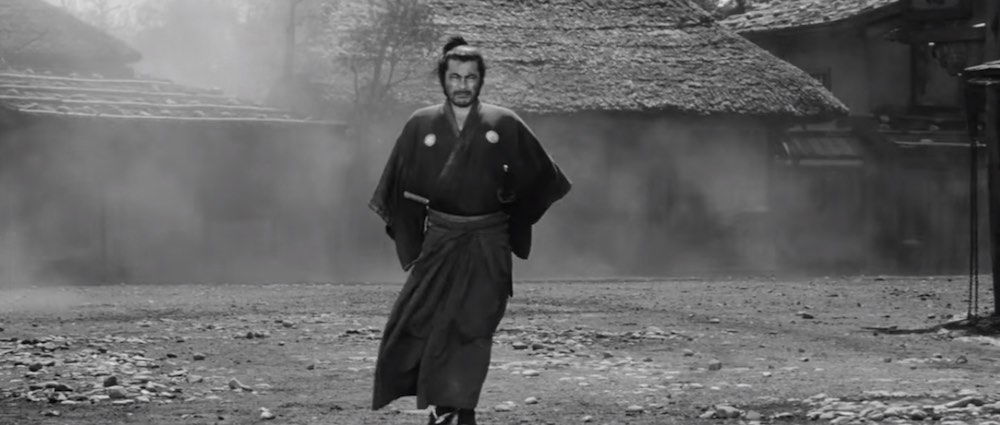History - Fall 2024 - Week 12
HISTORY of Japanese Business: Monday 4th Period (月)4限
MONDAY History (Fall 2024)
下記の方法に従うこと
READ THE DIRECTIONS
WEEK 12HistoryDecember 23 [月] ~ January 6 [月]I will post the final assignments sometime before 2025 January 6.This week's HONDA assignment is the only one for now. Happy Holidays! |
2024 Fall SemesterHistory Class Schedule (Monday)Online class ≠ holiday! | |
| Day | Location |
| 9/23 | 6009 教室 |
| 9/30 | 6009 教室 |
| 10/7 | 6009 教室 |
| 10/14 School holiday | no classes at KU |
| 10/21 (+) | 6009 教室 |
| 10/28 (+) | 6009 教室 |
| 11/4 School holiday | no classes at KU |
| 11/11 | website (online) オンライン |
| 11/18 (+) | 6009 教室 |
| 11/25 | 6009 教室 |
| 12/2 | 6009/hybrid |
| 12/9 | 6009 教室 |
| 12/16 | 6009 教室 |
| 12/23 | website (online) オンライン |
| 12/30 School holiday | no classes at KU |
| 1/6 | website (online) オンライン |
| 1/13 School holiday | no classes at KU |
| 1/20 Final Due | website (online) オンライン |
SECTION 1Honda Financial Information & ProductionAutomobiles & Motorcycles Performance ReportsComplete : 提出期限 January 6 (9pm) (Monday) 1月6日 (21:00) (月) (+1) Point: submit by 12/23 (月) 21:00 | |
I will post the final assignments sometime before 2025 January 6.This week's HONDA assignment is the only one for now. Happy Holidays! | |
 | 1. Honda Finance & Production(Assignment 29 points) (課題) |
*MINIMUM SCORE - score 18/29 required for first attempt - (You can try this as many times as your want, but your instructor will only consider the 1st & 2nd scores.) | |
SECTION 1.1Godzilla | |
 | Godzilla (Gojira) (3:33) |
| Toho Studios (2:10) (LOUD & Italian) | |
| Japanese film industry stats (1955-2023) | |
SECTION 1.2Samurai Films | |
 | Yojimbo (2:55) |
| Seven Samurai/Magnificent Seven (1:00) | |
| Mifune (2:08) | |
| Unforgiven (2013) (2:38) Unforgiven (1992) | |
SECTION 1.3Kurosawa & Star Wars | |
 | Hidden Fortress/Star Wars (2:41) |
| Kurosawa & Star Wars (7:51) | |
SECTION 1.4Anime | |
 | Anime History (1960-2020) (video) |
| Totoro (video) | |
| Spirited Away (Chihiro) [Disney/English] | |
| Miyazaki (video) | |
| Anime Industry Report 2023.pdf Anime Industry Report 2022.pdf Other anime industry reports (link) | |
| Anime labor: the Dark Side of Anime (article) | |
Anime labor: the Dark Side of Anime (article)From the article: "But anime’s outward success conceals a disturbing underlying economic reality: Many of the animators behind the onscreen magic are broke and face working conditions that can lead to burnout and even suicide. The tension between a ruthless industry structure and anime’s artistic idealism forces animators to suffer exploitation for the sake of art, with no solution in sight." | |
SECTION 1.5Akira & GhostInfluential anime SF in the West | |
 | Akira (1988) (1:52) Akira (Japanese) |
| 攻殻機動隊 Kōkakukidōtai Ghost in the Shell (1995) (3:30) (Montage) Ghost in the Shell (1995) (Spider Tank) [Japanese] | |
| The Matrix (2:34) (LOUD) | |
SECTION 1.6Essay QuestionComplete : 提出期限December 22 (10pm) (Sunday)12月22日 (22:00) (日) | |
1.6 Essay Question | Writing: 200 words or morebusiness/academic response |
1.6 Essay Question about Movies & Anime (Assignment) (課題) (1) watch the videos (2) read some of the article about anime labor (3) review the anime industry report for 2023 WRITING: What thoughts or reactions do you have about the information above? You can discuss multiple points or focus on just one aspect. Please explain your response. As the instructor, I need to know that you have actually thought about the material. What did you learn? What was important? The writing in this assignment should be at least 200 words. This is a business history class, not about your favorite movies or animation. Write an academic response. | |
"I thought the videos were interesting. I want to learn more about the topic. I love anime. It is so cool! Only Japan produces such high quality animation. I am proud of Japan." Please DO NOT write like this. | |
Class ScheduleHistory 2024 | |
September 23 [week 1] (15:20~17:00)Japan: General Themes in History -Various themes from ancient times to the present -Economic History of Japan | |
September 30 [week 2] (15:20~17:00)Japan: Foreign Technologies & Influences -China, Korea, Portugal, Holland, USA -rice, tea, silk, writing, guns, Buddhism, neo-Confucianism -Tokugawa regime (bakufu); daimyo | |
-> Imperial Japan 1868-1945 <- | |
October 7 [week 3] (15:20~17:00)Meiji Era 1870s~1910s -Meiji Restoration; changes to nation -Tokugawa vs. Meiji economic, political & social organization -"Western learning" through the Japanese lens -rapid industrialization; zaibatsu ("financial cliques" = monopolies) -steel; shipbuilding; textiles -wars: China & Russia; annexation of Taiwan & Korea -industrial boom due to WWI video: zaibatsu illustration (6 min.) Class PDFs | |
October 14 is KU holiday: no classes | |
October 21 [week 4] TWO PARTS(PART 1) (required 70 min.) 15:20~16:30 1920s & 1930s -economy and politics after WWI; the 1920s-30s -consumer product markets: cosmetics; clothes, cars -birth of Toyota, Nissan, etc. -zaibatsu expansion -"new zaibatsu" and growth of militarism & global crises -banking crisis of 1927 (general) 昭和金融恐慌 Shōwa Kin'yū Kyōkō -Economist article: The Problem with the Meiji Period (PART 2) (EXTENDED LECTURE) (optional 60 min.) 16:40~17:40 -economy and politics in the 1920s-30s -global crises increase zaibatsu and militarism -details about internal & external conflicts -Japan's actions in China (1931~onward) -Second China-Japan War (1937-1945) Bloody Saturday (baby bombed photo) | |
October 28 [week 5] TWO PARTS(PART 1) (required 70 min.) 15:20~16:30 -Shiseido (Cosmetics) [case study of peacetime industry] -democracy, labor, peacetime economy 1923-36 -Japan's wartime economy, 1937-45 -war benefits zaibatsu, Toyota, Nissan, etc. -how the war affects issues today Asia-Pacific War (1937-1945) -War 1937-1945 (map of each day: video) (PART 2) (EXTENDED LECTURE) (optional 60 min.) 16:40~17:40 -details about the relationship between Japan & USA -details about the Pacific War -U.S. campaign in the Pacific -the atomic bombs and impact -"Downfall" by Richard Frank (End of the Japanese Empire) -Asia-Pacific War: Death Tolls & Actual Focus -WWII in the Pacific (1941-1945) | |
November 4 is KU holiday: no classes | |
-> Japan after 1945 <- | |
November 11 [week 6] = Website (online)Two videos: about postwar Japan & about SONY --web assignments | |
November 18 [week 7] TWO PARTS(PART 1) (required 75 min.) 15:20~16:35To understand Japan today, it is important to understand Japan after 1945. 1945-1960: Postwar occupation and recovery -current economic complexity - Japan -economic and political rebuilding (economic & political ideologies) -new constitution (1947) and industrial institutions (zaibatsu -> keiretsu) -developing close ties with the U.S. -war in Korea drives recovery in Japan -NTT from AT&T -birth of Sony, Honda, & Japan becomes exporter -evolution of Yamaha (PART 2.1) (optional 60 min.) 16:45~17:45Cold War in East Asia 1945-1991 (PART 1) -political, economic, & military conflicts of the period -revolution in China -polarized region: China & USSR vs. USA, Japan, allies -post-colonialism & revolution; violence & genocide -war in Korea: revolution in Indonesia; war in Vietnam; genocide in Cambodia Cold War in East Asia 1945-1991 (PART 2): More details, questions, etc. | |
November 25 [week 8](PART 1) (required) 15:20~16:551960s & 1970s -High-Growth Period of 1960s-70s -two economies: old industrialist vs. new consumerist -the new efficient business model -the new Japanese management model (Meyer's Culture Map) -Toyota Production System -creating the world's 2nd largest GDP -oil & automobiles, electronics (exports) (PART 2)(optional) 17:05~17:45Extra discussion and details about this period | |
December 2 [week 9] = 6009 / hybrid classEach student can choose one option for themselves: class OR online (1) Room 6009: History of women in Japan (15:20~17:00)-themes and topics from history that are important today -women in business and politics -working, labor: career statistics -Japanese women in the arts -geisha [geiko] vs. maiko -Japanese patriarchy & family system -family -women under the law (sex crime statistics) Extra discussion and details about this topic (2) Website-hybrid: Online Subjects -videos and reading on economic topics -online assignment | |
December 9 [week 10] (15:20~17:00)Bubble economy バブル経済 (1980s-90s)-Japan's economy in the 1980s-90s -management styles & philosophies -effects on Japan since year 2000 | |
December 16 [week 11] (15:20~16:35)Entertainment industry (exporting)-entertainment industry (exports) -film, anime & manga (industrial report) -Kurosawa, samurai films, Godzilla (ゴジラ) Walking Tour of Yokohama Harbor -history in Yokohama on foot -Traditional Port Area & Yamashita Park | |
December 23 [week 12] = Website (online)Honda --web assignment | |
December 30 is KU holiday: no classes | |
January 6 [week 13] = Website (online)Economics video on the Japanese economy since 1990s --web assignment | |
January 13 is KU holiday: no classes | |
January 20 [week 14] = Website (online)--FINAL ASSIGNMENT due | |


